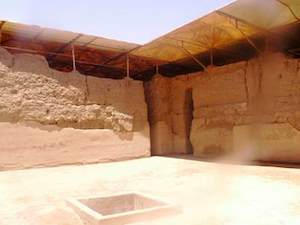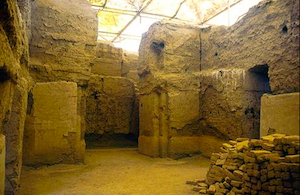I think that the article by these people is close to slander and an offence to the people I know…
By Niels Peter Lemche
University of Copenhagen
September 2011
A few days ago Sean McLachlan, who seems to make a living out of making announcements, wrote about certain Syrian historical monuments in danger, e.g., the Crac de Chevalier and especially the ancient Mari.
See here http://www.gadling.com/2011/09/15/ancient-city-of-mari-in-syria-under-threat/
Mr. McLachlan says that he visited Mari in the 1990s. He bases his report on a similar report written by Emma Cunliffe, published in Popular Archaeology September 4th 2011; this article mentions up to twelve sites in danger.
Referencing this article in Popular Archaeology, he includes Palmyra, Ebla, and Carchemishin as danger zones.
It is quite easy to tell such stories about Syria, especially at this moment when the country is in deep problems. I have no intention of commenting on the ongoing revolution in Syria. That is not my concern in this place, but I have visited Syria a number of times: the last one was in 2010.
I have never been to Carchemish. It is quite complicated since it is situated right on the border between Turkey and Syria. However, as I understand it from an article in Wikipedia, until 2010 there was extensive work taking place on the Syrian side which was intended to improve the status of the tell.
Palmyra I visited in 1992, 1995, 1998, 2005, and 2010. I found no decline of the status of the ruins there. On the contrary, a lot of energy has been invested in turning Palmyra into a major site (as if it were not already).
Ebla I visited in 1995, 1998, 2005, and 2010. There were no traces of decay there. The ruins are well kept and attended.
I had the same impression in other places like Ugarit, Ain Dara, Apamea, or to be honest wherever I went. Crac is an enormous complex, and I guess that it will take many earthquakes to get it down. However, again it was well attended and repaired where necessary.
Among the ongoing projects is the clearance of Bosra of modern inhabitants. It's a sad situation since this is a charming part of Bosra where people are still living, but it does say that the authorities really care about Syria’s monuments.
I suppose that this could go on for a while and also include the museums. Again, I had the same impression: Damascus’ national museum is being renovated, and as a result, in 2010 half the museum was closed to public. The museums in Aleppo and Der ez-Zor are also OK.
I have only visited Mari twice, in 2005 and 2010. I could see no deterioration there in the course of the five years between the visits. There is one good sign of how well attended Mari is: that is, how clean it is swept. There is no dirt lying around in corners. It would, however, be interesting to see what it looked like before the protective screen was put up (definitely before 2005). I guess that most of the erosion occurred before this protection was established. I am including a couple of photos showing the entrance to Zimrilim’s palace and of one of the halls in his palace. One is from 2005; the second is from 2010.
I think that the article by these people is close to slander and an offence to the people I know: the former Director of Antiquities, Dr. Sultan Muhesen, or the present director of the Museum in Aleppo, who personally showed my team around last year. It is easy to attack somebody already on his knees, but it does not make it more proper.
The condition of the palace in Mari in 2005 and 2010




